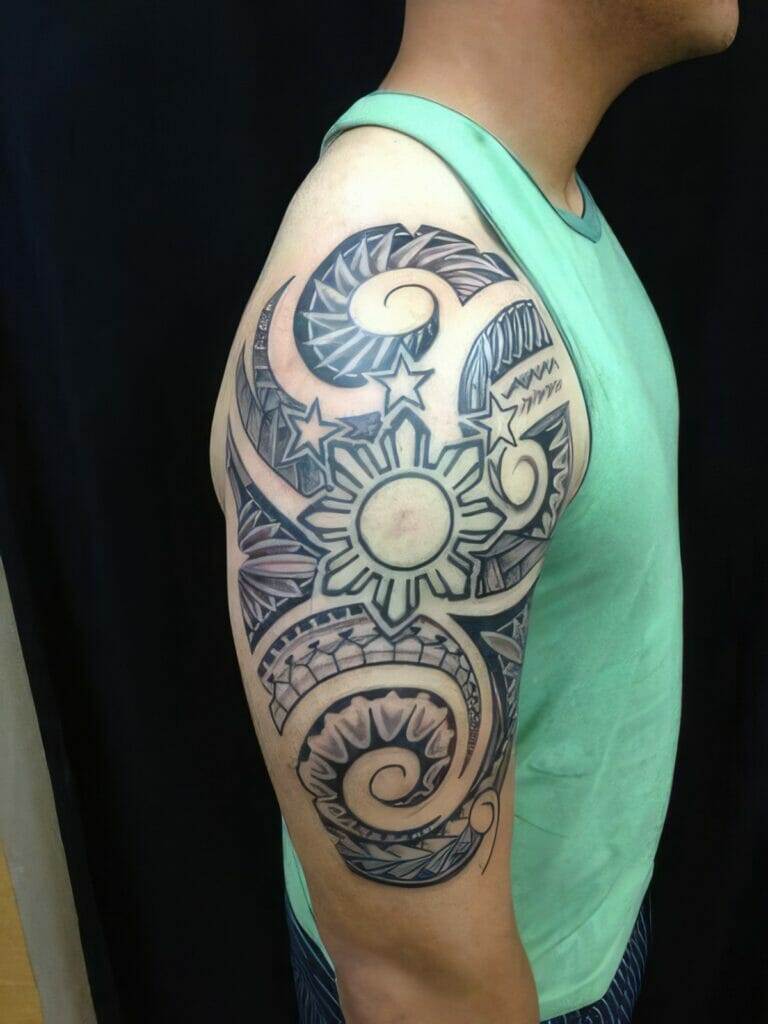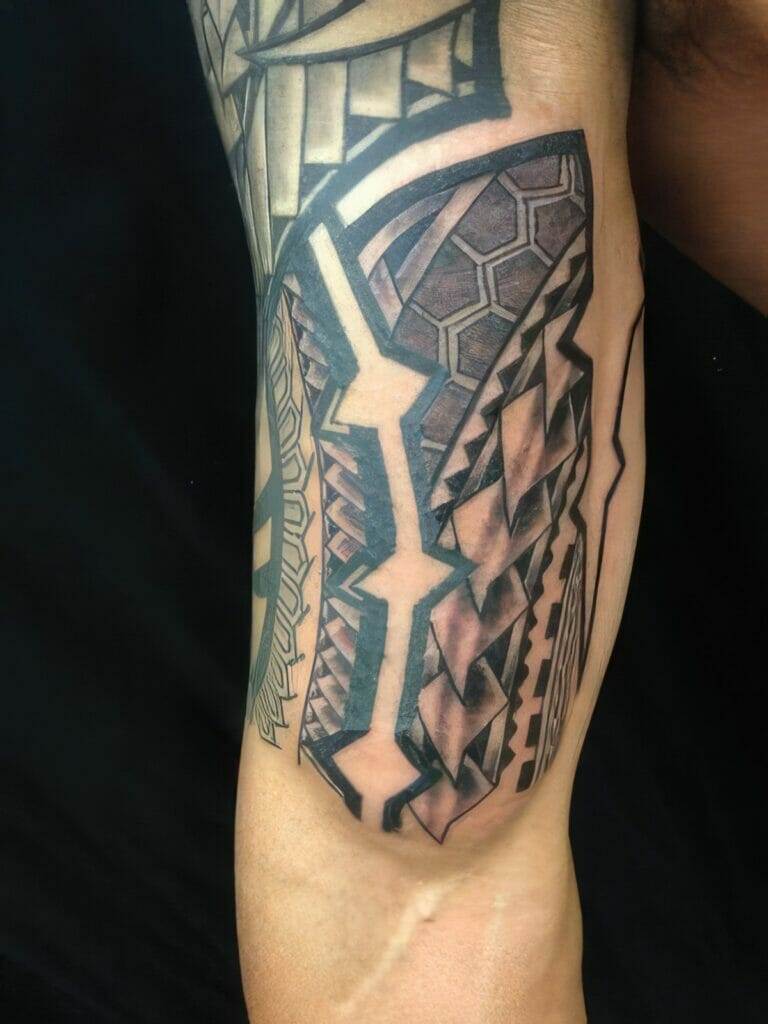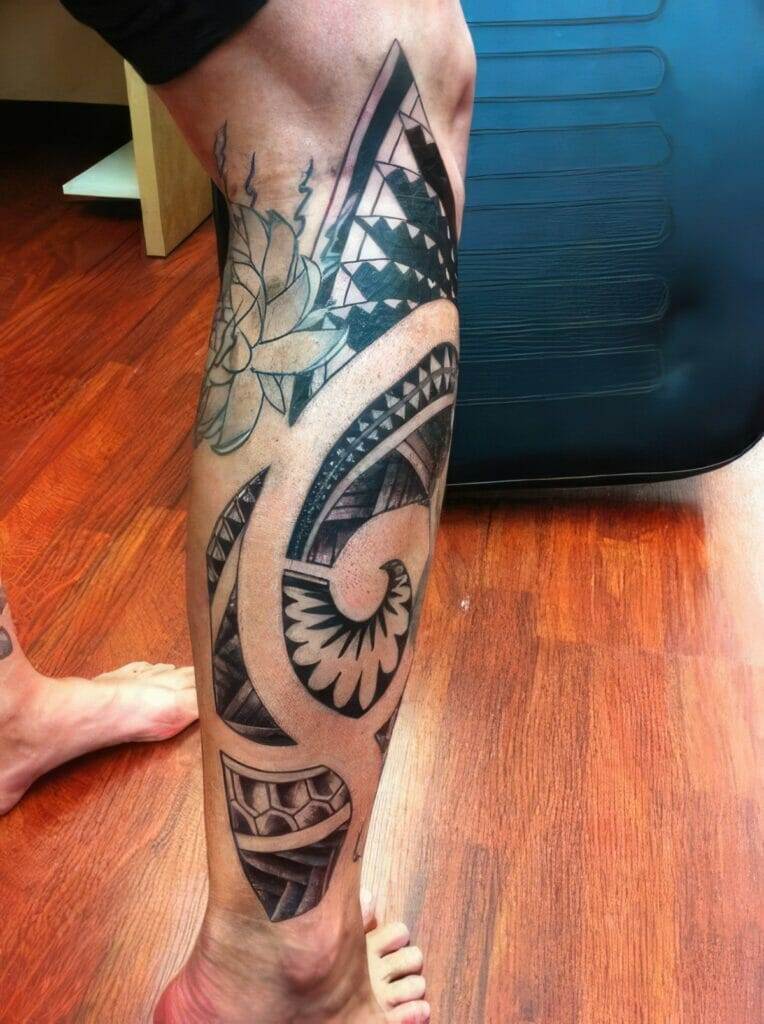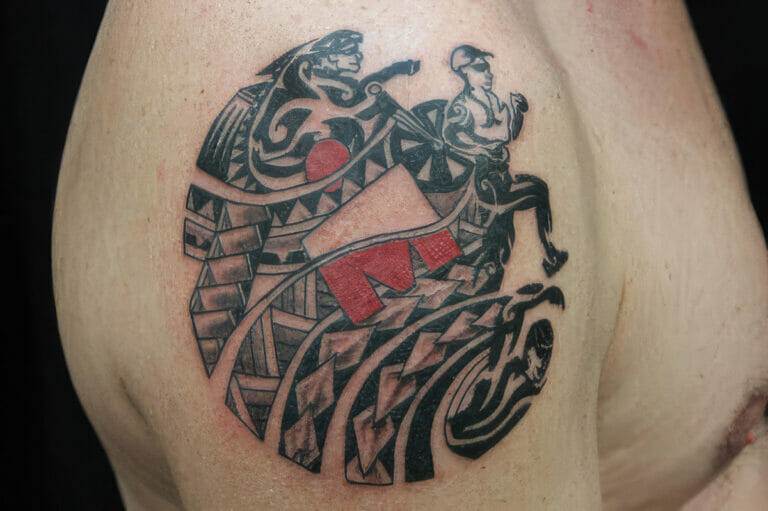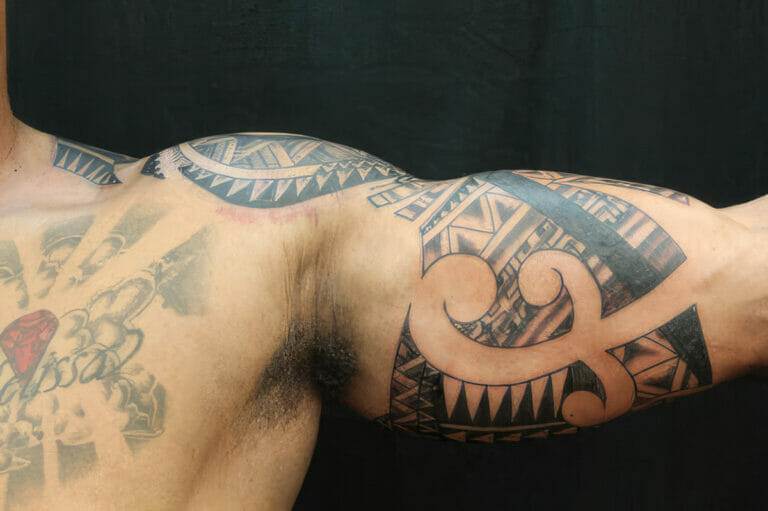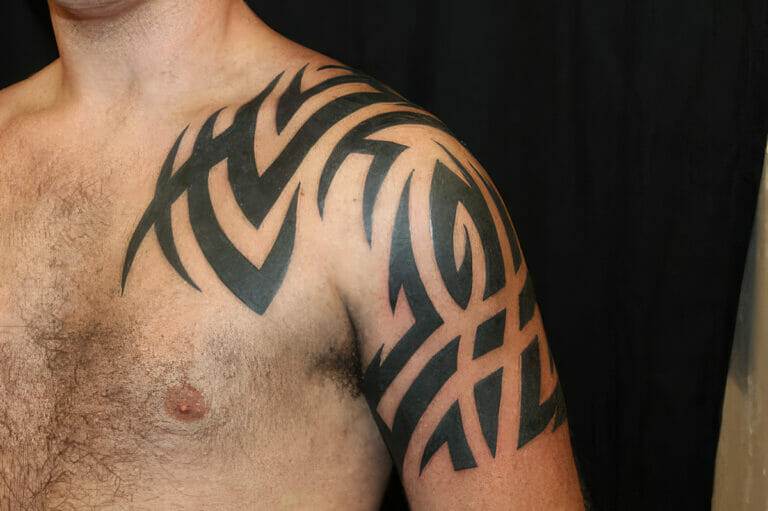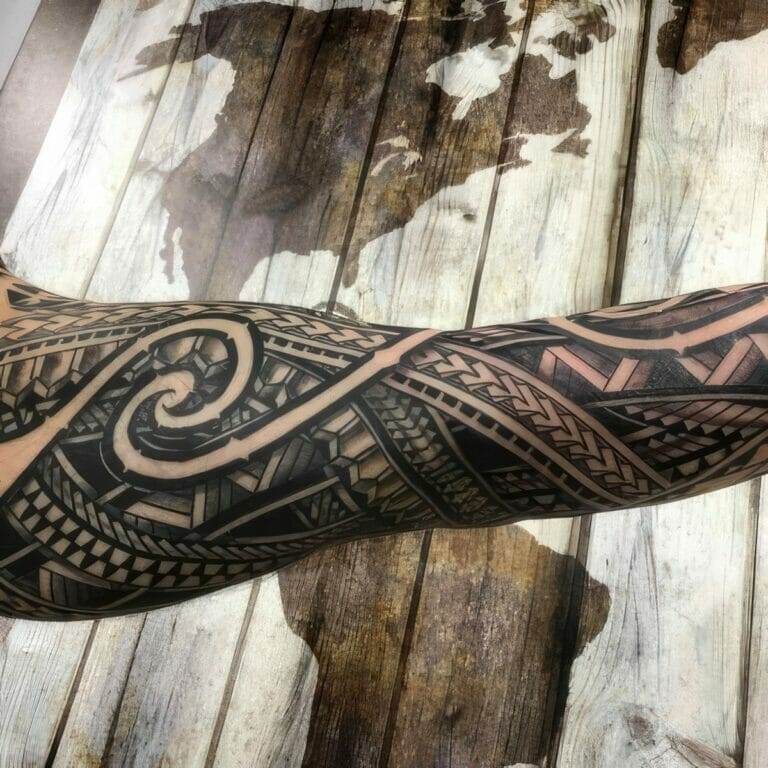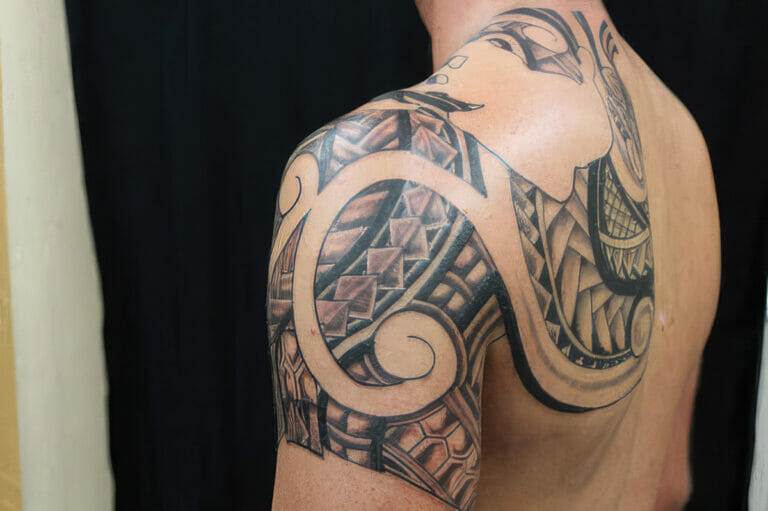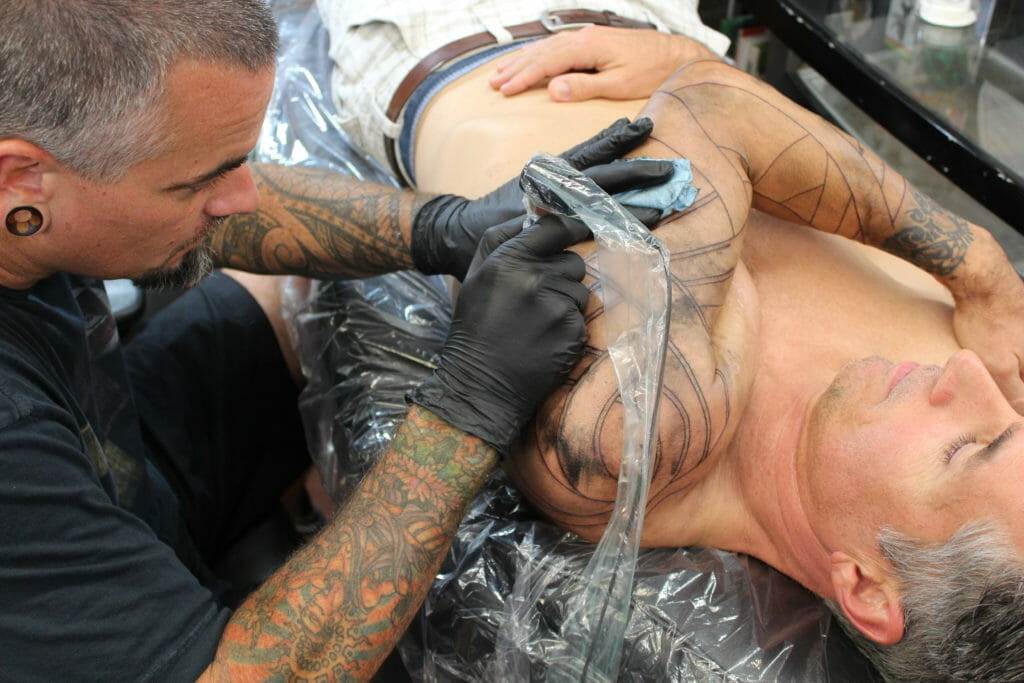
Polynesian tattoo art is a unique and ancient form of body art that has a rich history and deep cultural significance. The art of tattooing has been practiced in Polynesia for centuries, with each island group having its own distinct style and symbolism. Polynesian tattooing is not just about aesthetics; it is a way for individuals to express their identity, heritage, and social status. In this article, we will explore the origins of Polynesian tattooing, the symbolism behind the designs, the significance of tattooing in Polynesian culture, the impact of Western influence, the connection between tattooing and navigation, the importance of Polynesian tattooing in contemporary society, the evolution of tattooing techniques, the globalization of Polynesian tattooing, and the future of this ancient art form.
The Origins of Polynesian Tattooing: A Tradition Passed Down Through Generations
Polynesian tattooing has a long and storied history that dates back thousands of years. It is believed to have originated in Southeast Asia and spread throughout the Pacific Islands as early as 2000 BCE. The art of tattooing was brought to Polynesia by the Austronesian people who migrated to the region. These early settlers used tattoos as a way to mark important milestones in their lives, such as reaching adulthood or achieving a certain social status.
Tattooing played a significant role in Polynesian society. It was not just a form of body decoration; it was also a way to communicate one’s identity and social standing. Different patterns and symbols were used to represent different tribes, families, and individuals. The process of getting a tattoo was often seen as a rite of passage and was accompanied by rituals and ceremonies.
The Symbolism Behind Polynesian Tattoo Designs: Understanding the Meanings
Polynesian tattoo designs are known for their intricate patterns and symbolism. Each design has a specific meaning and represents something significant in Polynesian culture. For example, the turtle symbolizes fertility, longevity, and protection, while the shark represents strength, power, and adaptability. Other common symbols include the sun, which symbolizes life and prosperity, and the ocean waves, which represent the constant flow of life.
The meanings behind Polynesian tattoo symbols can vary depending on the island group and the individual. However, there are some common themes that can be found throughout Polynesia. Many designs are inspired by nature and the elements, such as animals, plants, and celestial bodies. Others are influenced by Polynesian mythology and folklore, with symbols representing gods, heroes, and mythical creatures.
The Significance of Tattooing in Polynesian Culture: A Rite of Passage
Tattooing has always held great importance in Polynesian culture. It is not just a form of body art; it is a rite of passage that marks important milestones in a person’s life. In traditional Polynesian society, getting a tattoo was seen as a way to transition from childhood to adulthood. It was a way for young men and women to prove their strength, courage, and commitment to their community.
The process of getting a tattoo was often accompanied by rituals and ceremonies. These rituals varied from island to island but typically involved prayers, chants, and offerings to the gods. The tattoo artist was seen as a spiritual guide who would help the individual navigate their journey into adulthood. The pain of getting a tattoo was seen as a test of endurance and a way to show one’s commitment to their community.
The Impact of Western Influence on Polynesian Tattoo Art: The Beginning of Modernity
The arrival of European explorers in the Pacific Islands in the 18th century brought about significant changes in Polynesian tattoo art. The influence of Western culture led to a decline in traditional tattooing practices, as missionaries and colonial powers viewed tattoos as barbaric and uncivilized. Many Polynesians were forced to abandon their traditional tattooing practices and adopt Western clothing and customs.
However, despite the efforts to suppress Polynesian tattooing, the art form managed to survive. In the late 19th century, there was a resurgence of interest in Polynesian culture, fueled by the romanticized image of the “noble savage” in Western literature and art. This led to a renewed appreciation for Polynesian tattoo art, and many Polynesians began to reclaim their cultural heritage.
The Role of Navigation in Polynesian Tattooing: A Connection to the Sea
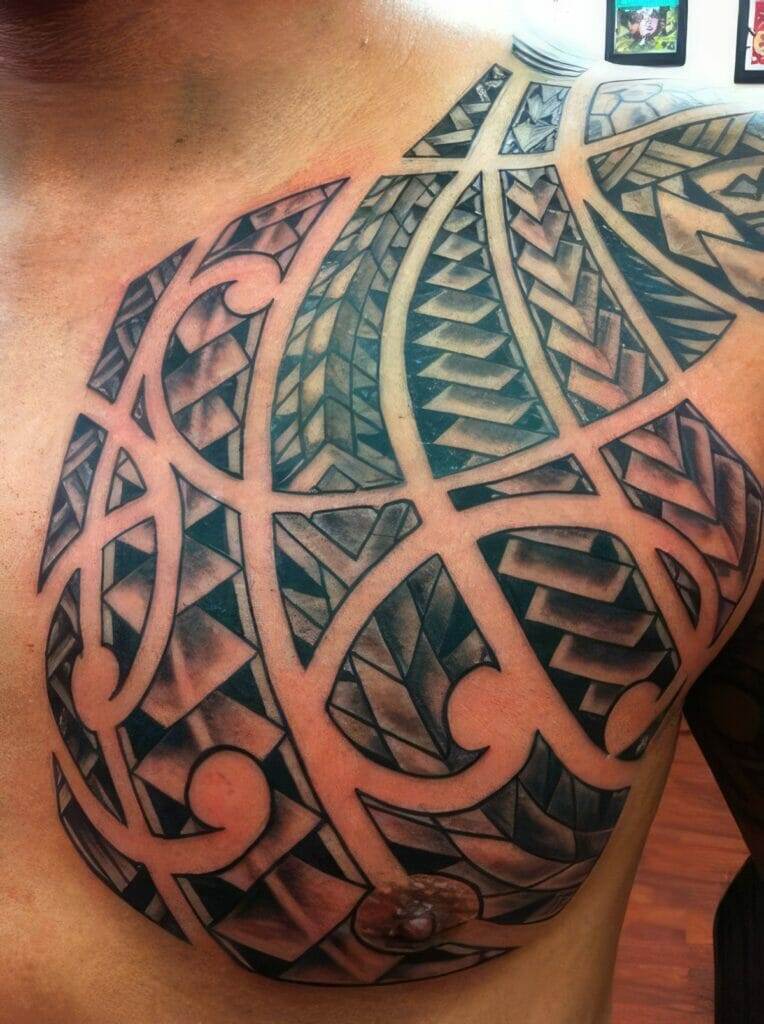
Navigation has always played a crucial role in Polynesian culture, and it is closely tied to tattooing. The Polynesians were skilled navigators who used the stars, currents, and other natural signs to navigate the vast Pacific Ocean. Tattooing was seen as a way to honor and connect with the sea, which was both a source of sustenance and a means of transportation.
Many Polynesian tattoo designs feature sea creatures such as sharks, turtles, and fish. These creatures are not just symbols of the ocean; they also represent qualities such as strength, adaptability, and fertility. The patterns and motifs used in Polynesian tattoo designs are often inspired by the movement of waves or the shapes of shells and coral reefs.
The Importance of Polynesian Tattooing in Contemporary Society: A Revival of Tradition
In recent years, there has been a resurgence of interest in Polynesian tattooing, both within Polynesian communities and among people from around the world. This revival can be attributed to several factors, including a growing appreciation for indigenous cultures, increased access to information about Polynesian tattoo art, and the desire for a more meaningful and personal form of self-expression.
Polynesian tattooing is seen as a way to connect with one’s heritage and preserve cultural traditions. Many Polynesians are getting tattoos as a way to reclaim their identity and assert their cultural pride. At the same time, people from other cultures are drawn to Polynesian tattoo art because of its beauty, symbolism, and connection to nature.
The Evolution of Polynesian Tattoo Art: From Hand-Tapping to Modern Techniques
The techniques used in Polynesian tattooing have evolved over time. Traditionally, tattoos were created using a process called hand-tapping, where a sharp tool was dipped in ink and tapped into the skin using a mallet. This method was time-consuming and painful, but it allowed for greater control and precision.
In recent years, modern tattooing techniques have been introduced to Polynesia. Tattoo artists now use electric tattoo machines, which allow for faster and more efficient tattooing. While some traditionalists argue that this has led to a loss of authenticity, others see it as a way to preserve the art form and make it more accessible to a wider audience.
The Globalization of Polynesian Tattooing: Its Popularity in the Modern World
Polynesian tattooing has gained popularity around the world, thanks in part to globalization and the spread of information through the internet and social media. People from all walks of life are now getting Polynesian-inspired tattoos as a way to express their individuality and connect with a rich cultural heritage.
However, with the increasing popularity of Polynesian tattooing comes the risk of cultural appropriation. It is important for people who are not from Polynesian backgrounds to approach this art form with respect and understanding. It is also crucial for tattoo artists to be knowledgeable about the cultural significance and symbolism behind Polynesian designs.
The Future of Polynesian Tattoo Art: Balancing Tradition and Innovation
The future of Polynesian tattoo art lies in finding a balance between tradition and innovation. It is important to preserve the cultural heritage and authenticity of Polynesian tattooing while also embracing modern techniques and technologies. This can be achieved by ensuring that tattoo artists are well-educated about the history and symbolism of Polynesian designs and by encouraging collaboration and exchange between traditional and modern tattoo artists.
It is also crucial to involve the Polynesian community in the preservation and promotion of their cultural heritage. This can be done through initiatives such as cultural festivals, educational programs, and support for local tattoo artists. By empowering the Polynesian community to take ownership of their cultural traditions, we can ensure that Polynesian tattoo art continues to thrive for generations to come.
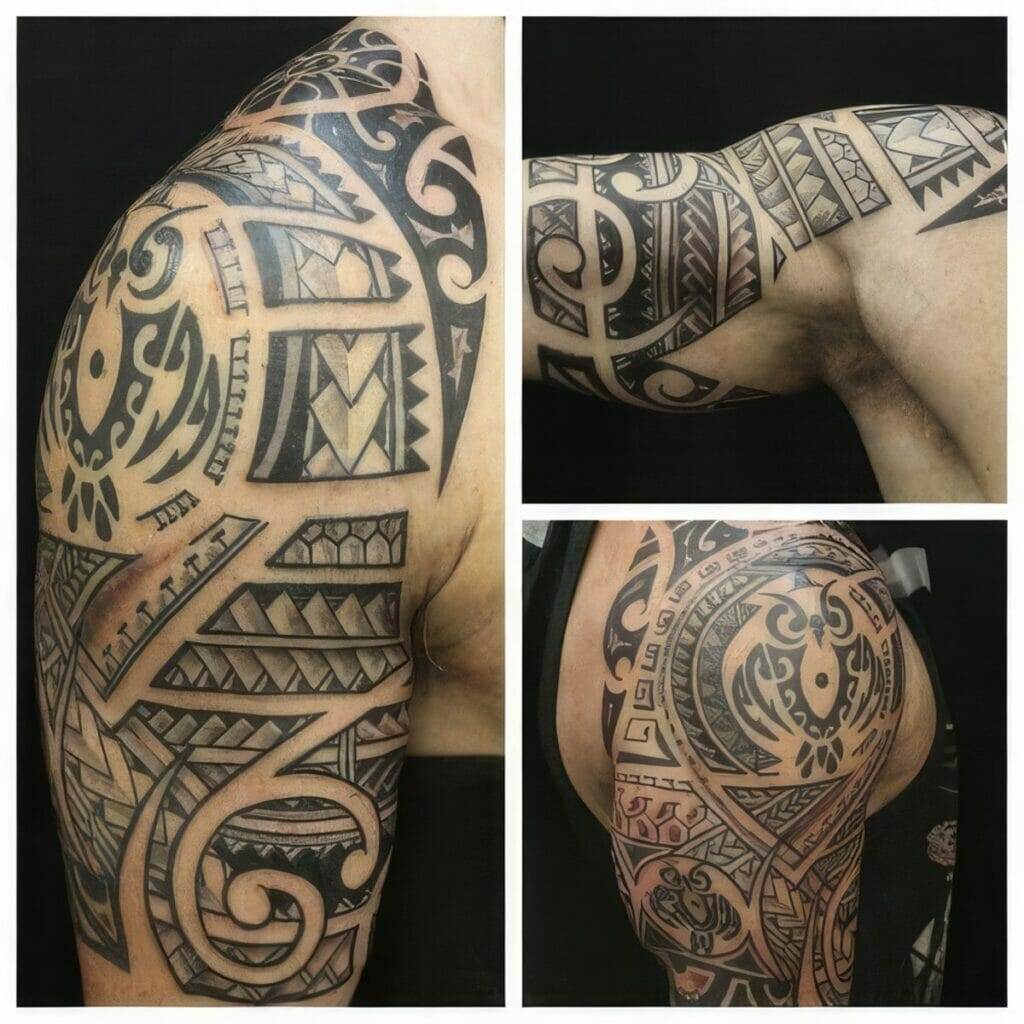
The Enduring Legacy of Polynesian Tattooing in the Modern Era
Polynesian tattooing has a rich history and deep cultural significance that continues to resonate in the modern era. It is not just a form of body art; it is a way for individuals to express their identity, heritage, and social status. Polynesian tattoo designs are filled with symbolism and meaning, representing everything from gods and heroes to animals and natural elements.
Despite the challenges posed by Western influence and globalization, Polynesian tattooing has managed to survive and thrive. It has experienced a resurgence in recent years, with more people from around the world embracing this ancient art form. The future of Polynesian tattoo art lies in finding a balance between tradition and innovation, preserving cultural heritage while embracing modern techniques.
In conclusion, Polynesian tattooing is an enduring legacy that serves as a powerful connection to Polynesian culture, history, and identity. It is an art form that has stood the test of time and continues to evolve in the modern era. By understanding the rich history, symbolism, and significance of Polynesian tattoo art, we can appreciate and respect this ancient tradition and its enduring legacy.

